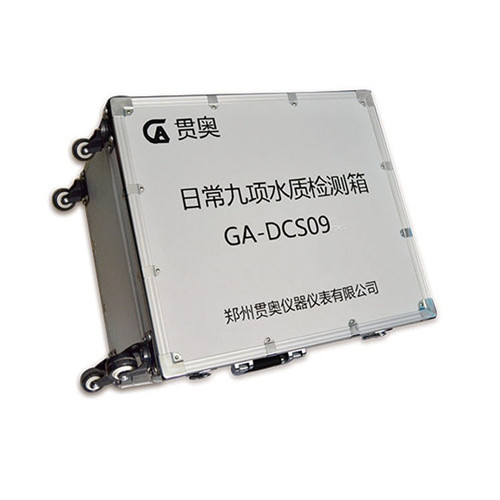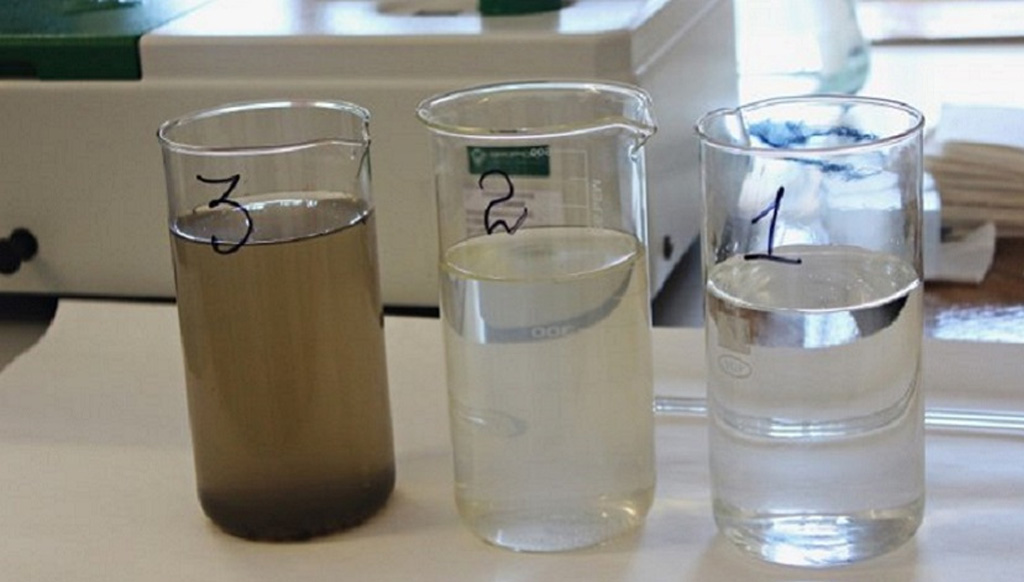Turbidity is an important parameter for the detection of drinking water. Generally, water plants will measure turbidity in all aspects, especially in the water outlet there are online real-time monitoring of turbidity instruments. The inspector can judge the degree of pollution of the water quality through the size of the turbidity parameter. In actual life, turbidity is mainly composed of suspended solids, colloids, and dissolved substances. We can measure the turbidity of existing water samples according to the national drinking water regulations and environmental water quality testing.

The hydrazine sulfate hexamethylenetetramine solution can quantitatively associate into water-insoluble macromolecular salts to make the water turbid. This is used as a comparison between the turbidity standard solution and the water sample to determine the turbidity of the water sample.
1. Turn on the power switch of the scattering turbidity meter and preheat for 30 minutes.
2. Pour the zero turbidity water into the sample bottle to the graduation line, screw on the bottle cap, and wipe off the water marks and fingerprints on the bottle body (be careful not to hold the bottle body directly by hand, so as not to leave fingerprints and affect the measurement accuracy) .
3. Put the loaded zero-turbidity water sample bottle into the sample holder, and ensure that the scale line of the sample bottle is aligned with the white positioning line of the sample holder, and cover the light-shielding cover.
4. After the reading is stable, adjust the zero adjustment knob to make the display zero.
5.Pour the 100NTU standard solution used for calibration into the sample bottle and put it into the sample holder, adjust the calibration button to display the standard value of 100.
6. Repeat steps 3, 4, and 5 to ensure that the zero point and calibration value are correct.
7. Put the sample bottle into the sample bottle and record the turbidity value of the water sample after the reading is stable.
8. Before the end, rinse the sample bottle with zero turbidity water for more than three times, and control the turbidity value below 0.3, then the turbidity detection work can be finished.

1. This method is applicable to the determination of the turbidity of drinking water and its source water.
2. The reagents should be analytically pure, and zero turbidity water should be used for zero point adjustment of the turbidity meter.
3. When measuring water samples with large chromaticity, filter the water samples with slow quantitative filter paper or a glass sand core funnel with a pore size of 2-5μm, and then measure the turbidity of the filtered water samples. The turbidity value of the filtered water sample is subtracted from the turbidity value of the water sample to be the turbidity of the measured water sample.
4. The collected water sample should be measured immediately, not more than 24h at most.
5. The sample bottle must be cleaned to avoid scratches. Clean the inside and outside of the sample bottle with detergent, rinse it repeatedly with distilled water, and dry it in a dust-free drying box. If it is used for a long time, soak with dilute hydrochloric acid for two hours and rinse with distilled water repeatedly. When holding the sampling bottle, only the upper part of the bottle body can be used to avoid fingerprints from entering the light path.
6. Measure in time after sampling to avoid inaccurate measurement results caused by temperature changes and particle sedimentation.
7. The water sample must be thoroughly mixed to avoid the influence of sedimentation and larger particles. Air bubbles in the sample bottle should be removed. When measuring a water sample with a lower temperature, condensation will occur on the body of the sample bottle. Therefore, the temperature of the water sample must be brought close to room temperature before measurement, and then the water marks on the bottle body should be wiped clean.
8. When measuring, not only the cleaning of the sample bottle and the correctness of the sampling must be considered, but the consistency of the measurement position should be ensured. The scale line of the bottle body should be aligned with the positioning line of the sample holder, and the shading cover should be covered to avoid the influence of stray light. During the measurement, due to the drift of the particulate matter, the displayed value will change back and forth. You can wait a while for the value to stabilize before reading. If there are too many bubbles or suspended impurities in the water sample, the data may have been unstable, and the reading should take the middle value (that is, the average of the maximum display value and the minimum display value).
最新动态
相关推荐